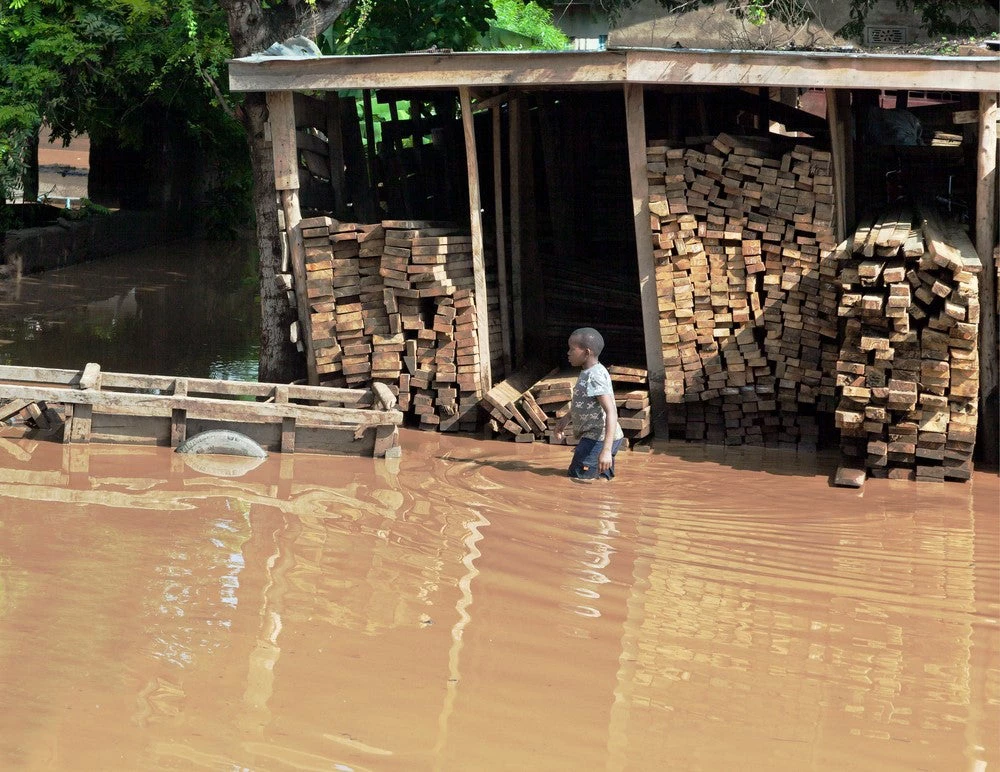 Flood in Tanzania. (Vadim Petrakov / Shutterstock.com)
Flood in Tanzania. (Vadim Petrakov / Shutterstock.com)
Imagine you are a farmer. Now imagine not being able to prove that the land that has been in your family for generations actually belongs to you. And what do you do when others are encroaching on your land and your concerns go unheard? Would you risk planting trees that would take years to mature? After all, how confident would you be about getting your land back if you had to abandon it momentarily due to a flood or another disaster?
Probably not very confident. And this is why secure land tenure is central in the fight against climate change.
While land tenure experts are in general agreement on this linkage, the Intergovernmental Panel on Climate Change (IPCC) has also recently agreed in their latest report Climate Change and Land that “land tenure is a key dimension in any discussion of land-climate interactions.” This is a milestone since the IPCC, as the United Nations body for assessing the science related to climate change, is a leading voice in the fight against climate change. This is the first time that this linkage is so prominently featured.
Let’s start with mitigation – the actions to limit global warming – by providing a simple example of tree planting and deforestation: Carbon is stored in trees, and forests are therefore known as carbon sinks. When deforestation occurs, the carbon is released to the atmosphere and accelerates climate change. So, protecting existing forests and incentivizing the planting of new trees is important in reducing greenhouse gas emissions.
But as mentioned earlier, why would anyone invest in planting trees or managing forests when they fear that their land could be taken away tomorrow? And it is precisely this uncertainty that could lead to deforestation, as short-term economic gains are favored over to long-term solutions. Hence, protecting people’s land rights provides security for long-term investments on land.
Secure tenure is also essential for safeguarding the existing forests against external forces. This is specifically true for forests managed by Indigenous Peoples, where much of the world’s carbon is stored. The IPCC report states that the recognition of customary tenure in these areas is a highly efficient and cost-effective way to reduce greenhouse gas emissions caused by deforestation.
Let’s imagine you live in a country where suddenly more floods occur due to climate change. Would you abandon your home during a flood when you have no guarantee that you get it back once the flood is over? Maybe not, but you would certainly put your life at risk. Even if you did decide to flee: You might come back and find the physical boundaries of your plot washed away. How then would you protect your land and properties, if you have no evidence of ownership or the original boundaries?
These challenges can be avoided if land rights of individuals and communities are recognized, recorded, and registered. Land tenure, land use, building, value, and zoning data is also fundamental for disaster risk modelling, monitoring, planning, and mitigation.
Furthermore, up-to-date and spatially accurate cadastre records allow targeting evacuation and other response activities , while they also enable establishment of insurance schemes for compensating people’s losses. We at the World Bank are working together with the Global Facility for Disaster Reduction and Recovery (GFDRR) and the University of Melbourne to explore the role that land and geospatial information takes in the context of improving resilience to disasters.
But where do we go from here? We need to better understand the local and global land tenure and climate change nexus to guide policy makers at all levels . However, knowledge alone is not enough, and concrete investments are needed to target the issue. While in 2018, multi-lateral development banks invested altogether $43.1 billion in climate change mitigation and adaptation, only a fraction of these investments are aiming to increase land tenure security. As the essential role of land tenure in the fight against climate change is becoming more evident, we hope that more stakeholders recognize these inseparable linkages and act upon them.
The land you stand upon and its associated tenure rights play a significant role in solving the global climate crisis.
READ MORE
- Brief: Geospatial Technology and Information for Development
- Blog: Securing land tenure with smartphones
- Blog: A disaster that could have been avoided: Enhancing resilience with land and geospatial data




Join the Conversation